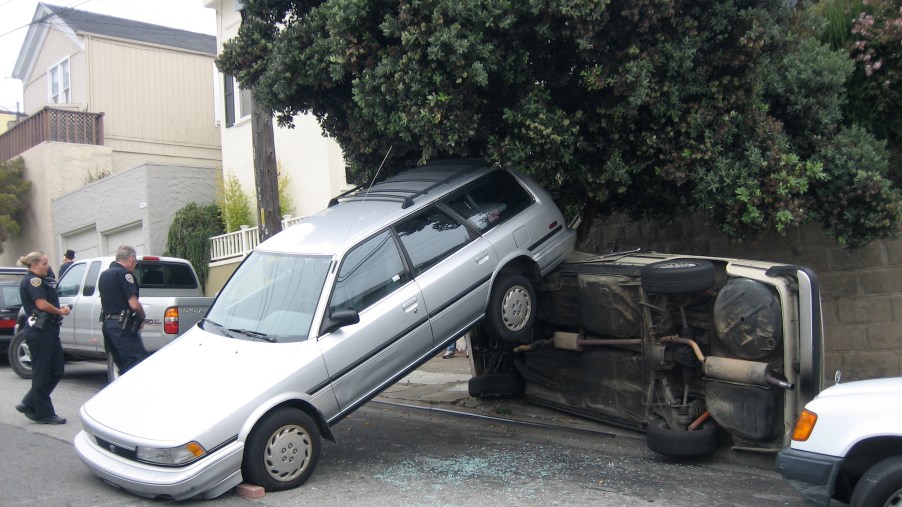
This Uncommon Car Safety Feature Could Save You From Money-Sucking Fender-Benders
Automatic emergency braking, or AEB, is an advanced safety feature that acts as a failsafe if a driver doesn’t begin braking to avoid a front-end collision. And this important car safety feature has a new friend: rear automatic emergency braking, or rear AEB.
Although automatic emergency braking has become standard on even many base models, rear AEB is still a rarity. And while we know that advanced driver-assistance systems aren’t foolproof and can’t replace the driver, rear autobrake has research behind it that shows it can reduce rearward collisions by 78 percent when combined with rear proximity sensors and a backup camera, Carfax reports.
What is rear AEB?
Rear AEB works with the rear cross-traffic alert (RCTA) safety feature to stop a vehicle instead of simply alerting drivers that they’re about to back into something. The greatest benefit to rear autobrake is avoiding expensive fender-benders.
Research from the Highway Loss Data Institute (HLDI) looked at the impact of rear AEB and other crash avoidance technologies. According to the Insurance Institute for Highway Safety (IIHS), “researchers found that vehicles equipped with rear AEB had 28 percent fewer property damage liability claims and 10 percent fewer collision claims.” This technology didn’t appear to affect injury crashes significantly, but that wasn’t expected because backing crashes are typically less dangerous due to lower speeds.
But rear crashes can be costly in vehicle damage and make up a large portion of insurance claims. Speaking about the value and importance of rear AEB, HLDI senior vice president Matt Moore said, “We haven’t seen that kind of reduction in claims for vehicle and other property damage from any other advanced driver assistance system.”
How does this safety feature differ from front automatic emergency braking?
Regular AEB is designed to prevent or mitigate forward collisions. If it senses an imminent crash, it will alert the driver and then apply the brakes if the driver’s response time is too slow. Though it might not always prevent collisions, this feature can reduce a crash’s severity and save lives.
Rear AEB doesn’t brake for pedestrians, animals, cyclists, or any object below the back bumper. But it brakes for obstructions such as light poles or other moving vehicles. Neither system is foolproof, and drivers shouldn’t rely on these features to prevent collisions, but both front and rear AEB can make a difference in a collision’s severity.
Models with rear AEB
Though rear AEB isn’t standard on most cars, some automakers are beginning to add it to their newer models’ advanced safety suites. For instance:
- The 2021 Subaru Forester and Subaru Outback offer this feature on higher-trim models.
- Rear AEB comes standard with the Lexus Safety System+ 2.0, available on most of the luxury carmaker’s vehicles produced after the 2019 model year.
- Nissan offers rear autobrake with its Safety Shield 360 package, available on most of the automaker’s vehicles, including the Altima.
- Many hybrid cars, such as the Toyota Camry, offer rear AEB.
- EVs such as Tesla models also boast this safety feature.
- And according to Consumer Reports, Genesis gets high marks from its customers for this feature.
While front AEB is becoming standard on most base trims, rear autobrake is generally not a standard feature. However, the IIHS and HLDI agree it should be. And even though it might not have a huge impact on injury collisions, rear AEB prevents fender-benders. And that saves drivers time and money and reduces costly insurance claims. It probably also saves a few light poles.


